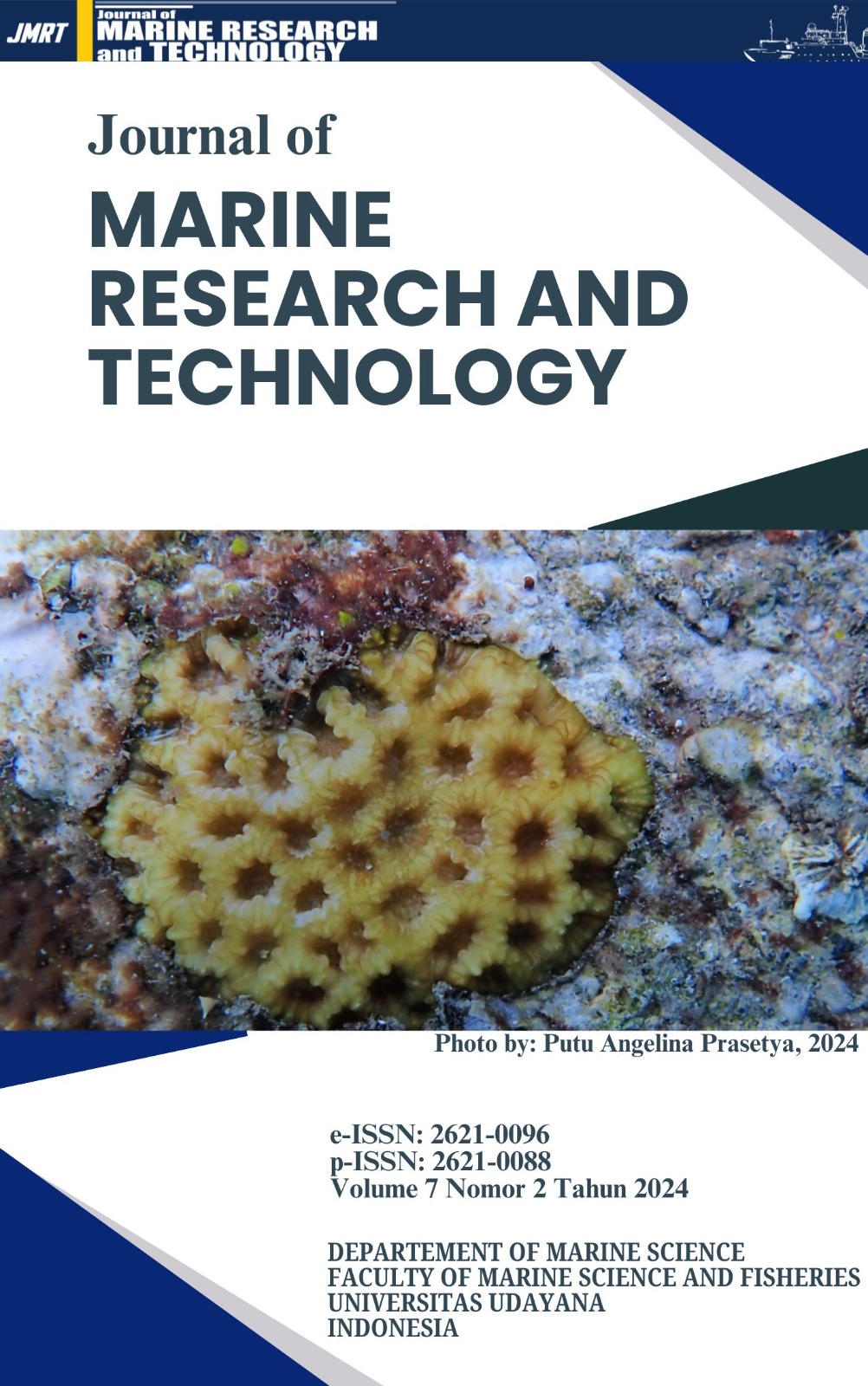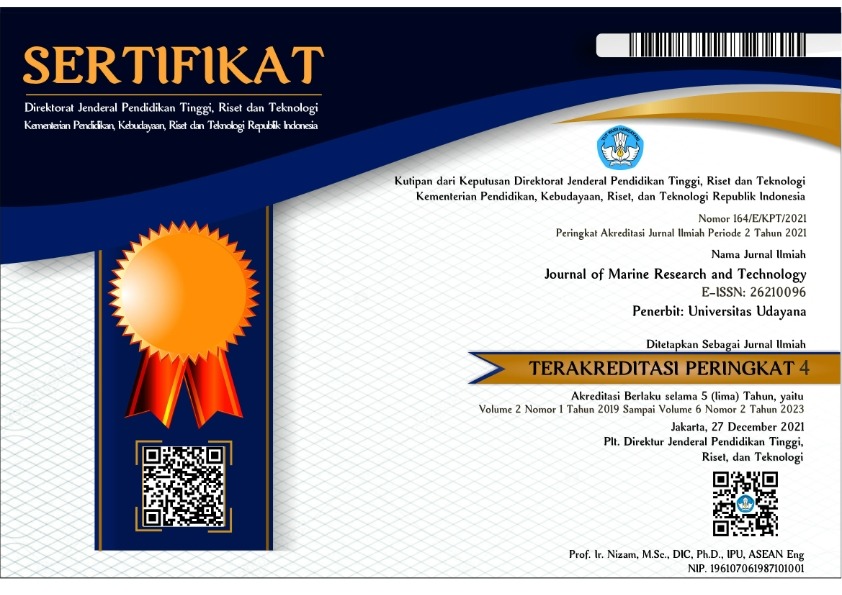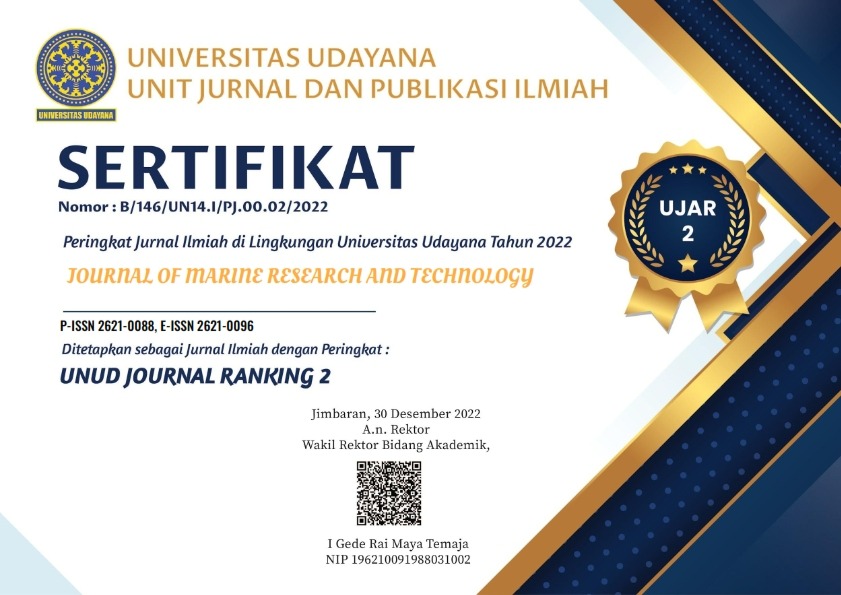Karakteristik Variabilitas Spasial dan Temporal Sebaran Klorofil-A Menggunakan Data Citra Satelit Aqua Modis di Perairan Selat Lombok dan Sekitarnya
Lombok Strait; Chlorophyll-a; Upwelling; ENSO; IOD
Abstract
The movement of the Indonesian Throughflow (Arlindo) through Indonesian waters affects the waters in the Lombok Strait. Mixing air masses between the air masses of the Pacific Ocean and the Indian Ocean will bring several nutrients that can influence the characteristics of the air masses of the waters of the Lombok Strait. The volume of air mass transport fluctuates seasonally and annually due to changes in wind patterns and the influence of ENSO and IOD phenomena. This research aimed to determine the characteristics of chlorophyll-a distribution and corrosiveness to the ENSO and IOD climate anomaly phenomena in the waters of the Lombok Strait. The data used is Aqua Modis level 2 satellite imagery with a resolution of 1 km for the period 2003-2022. This research uses spatial and temporal analysis methods on a monthly, seasonal, and annual basis. The research results showed that the monthly chlorophyll-a concentration (January-December) ranged from 0.18-0.36 mg/m3 while the annual chlorophyll-a concentration ranged from 0.18-0.33 mg/m3. The highest concentration in the east season was obtained on average at 0.35 mg/m3; in period II, it was obtained at 0.35 mg/m3. The lowest chlorophyll-a concentration in the west season was 0.18 mg/m3, and in the middle of the first season, with an average of 0.26 mg/m3. This shows that the average concentration in the Lombok Strait is in the low category (oligotrophic). A neutral phase dominates the chlorophyll-a anomaly condition with ENSO, while IOD dominates the chlorophyll-a anomaly condition during negative IOD events. The results also show that the upwelling intensity is influenced by ENSO, which found a strong correlation of 0.66, while with IOD, it has a strong correlation of -0.16.
Downloads
Copyright Notice
The copyright to this article is transferred to Journal of Marine Research and Technology (JMRT). The copyright transfer covers the exclusive right and license to reproduce, publish, distribute and archive the article in all forms and media of expression now known or developed in the future, including reprints, translations, photographic reproductions, microform, electronic form (offline, online) or any other reproductions of similar nature.






